Affiliate disclosure: This post may contain affiliate links. Please see our Privacy Policy.
Mead recipes can be hard to come by in this modern era, even though honey wine is one of the oldest beverages brewed by ancient peoples around the world. Still, dedicated homebrewers, historical reenactors, and even archeologists are recreating modern recipes for one of the world’s oldest craft beverages.
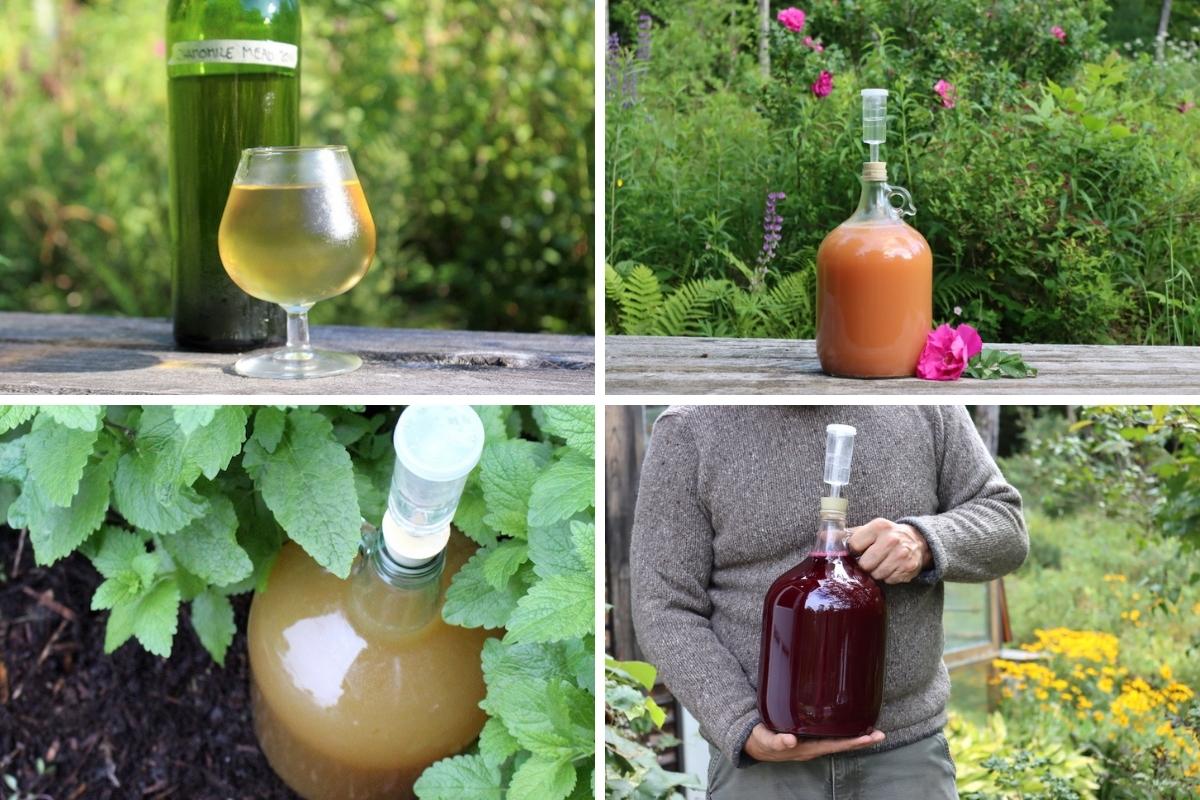
Making mead at home is both incredibly simple, and immensely satisfying. With just a few simple ingredients and minimal equipment, you can craft a truly exceptional honey wine. People have been making mead for millennia, in small homestead kitchens, long before modern breweries and vineyards took up most of the production.
I made my first mead recipes in college, with minimal equipment in my tiny dorm room. Since then I’ve made literally hundreds of gallons, much to the delight of my friends and family.
Thousands of years ago humans were brewing mead in wooden troughs, filtering the brew through juniper branches and bottling it in cured animal hides. Even without modern yeast strains, stainless steel brew kettles, and running water, they were able to make high-quality honey wine, worthy of praise in epic poetry and Viking sagas.
Really, all you need is honey, water, and a bit of patience.

What Is Mead?
The term “mead” refers to any alcoholic beverage made with honey, and they often include other ingredients such as fruit, flowers, grains, and malt.
The honey gives the finished beverage an incredible body, and the distinctive flavor of honey comes through in the final drink. Since each jar of honey is as unique as the flowers it came from, mead can range from light and floral when made with clover honey, to deep and resinous when made with darker types of honey.
Mead is often associated with the Vikings and other Nordic peoples, but honey wines have been made all over the world for thousands of years.
Some of the earliest evidence in the archeological record actually comes from China, dating back to more than 10,000 years ago, where traces of honey wine were found in drinking cups in burial chambers. (The book Ancient Brews: Rediscovered and Re-Created has a fascinating account of this particular find, including a recipe re-created based on the traces found on the cup!)
Though there’s little hard evidence further back, most archeologists believe mead was first made 20,000 to 40,000 years ago when ancient peoples mixed honey with water and it spontaneously fermented. Modern T’ej (Ethiopian Honey Wine) is still made in Africa with traditional recipes, though I imagine it’s quite different than brews from 40,000 years ago, but who knows?
Most of the traditional names for various styles of mead are actually in Latin, dating back to the Roman era when the first records of various types of fermented beverages were written.
Just about anywhere that had access to honey has traditional mead recipes, traditional recipes survive from Ethiopia to Scandinavia, and from the Celts in the British Isles all the way to Ancient China.
Types of Mead
The generic term “mead” can refer to any honey wine, but just as with grape wine you’ll find Chardonnay and Zinfandel, there are finer distinctions among types of mead based on the ingredients.
In general, mead is classified in two ways, by strength, and by ingredients.
- Short Mead or Quick Mead is a very light, carbonated mead that’s almost more like a very lightly alcoholic soda. It’s made with a very short fermentation time, usually around 1 to 3 weeks, and it’s consumed fresh. Sima or Finnish Fermented Lemonade is a good example of a quick mead.
- Hydromels or Session Meads are light, low alcohol meads that are usually around 3% to 8% alcohol. They’re popular in France and Spain, and they’re sometimes just stronger mead diluted down at serving time.
- Standard Mead is usually somewhere in the 8% to 14% alcohol range, and it’s made with wine yeast that has a low alcohol tolerance (so they die out early, leaving residual sugar and not too much alcohol).
- Sack Meads or Great Meads have the highest alcohol content, anywhere from 14% to 20%, and often a good bit of residual sugar to balance out the flavors. These were celebration meads made for special occasions or royalty, and are the most expensive to produce.
- Fortified Meads can be up to 60% alcohol because they’re first fermented and then fortified with distilled alcohol such as brandy. They’re basically the mead equivalent of port or other fortified wines.
- Sparkling Mead is a mead that’s bottled bubbly, so it’s sparkling rather than still. It can be any strength, but it’s bottled with residual sugar and living yeast, so it continues fermenting in the bottle to produce carbonation.
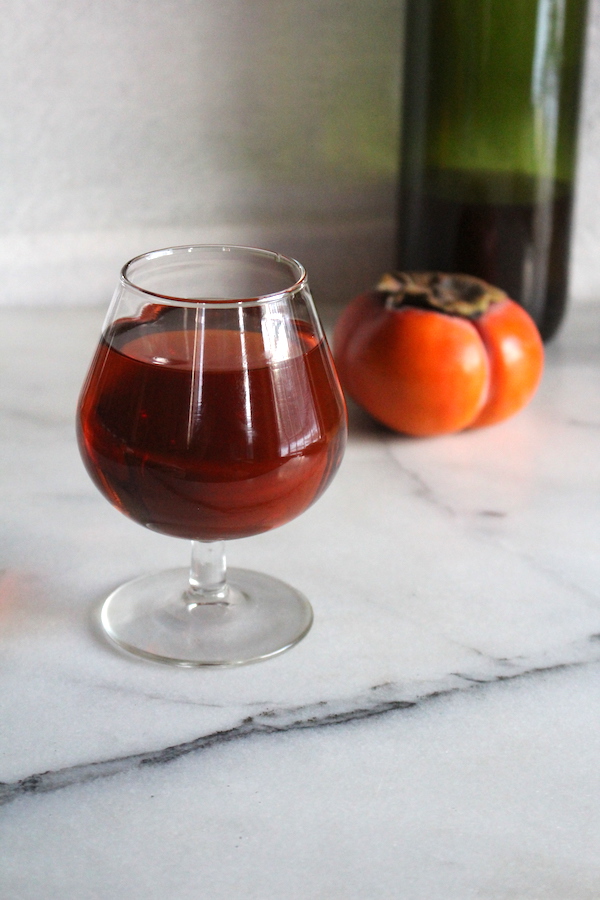
Beyond strength, meads are also categorized by their ingredients. Most of these names come from the Roman era and have Latin roots because they had a lot of fine distinctions in their specific honey wine recipes.
There are generic names, like melomel which includes any type of mead made with fruit, and then there are even more specific names for individual types of fruit meads. For example, pyment is a mead flavored with grapes. It’s also technically under the larger umbrella of “melomel” since it’s a fruit mead.
- Melomel ~ Fruit Meads
- Black Mead ~ A dark, rich mead flavored with black currants.
- Cyser ~ Made with apple juice or cider, this is a mix between hard cider and mead.
- Dragon’s Blood (or Viking Blood) ~ A deep red mead made with sweet red fruits, usually cherries.
- Morat ~ Mead with mulberries.
- Pyment ~ Mead made with grapes for flavoring, but most of the fermentable sugar is honey.
- Metheglin ~ Floral, Herbal, and Spice Meads
- Capsicumel ~ Spicy mead made with hot peppers.
- Rhodomel ~ Rose mead flavored with either rose blossoms or rose hips.
- Carmelized, Malted or Lactose Meads
- Bochet ~ Mead made with caramelized honey.
- Bochetomel ~ A caramelized honey mead that also incorporates fruit, usually dark fruit like blackberries or elderberries.
- Braggot ~ Using malt and hops, as well as honey, it’s a mix between beer and mead.
- Lactomel ~ A type of mead with added lactose (milk sugar) to give it a creamy mouthfeel.
- Tree-Based Meads (with Sap, Syrup, Bark or Wood)
- Acerglyn ~ A modern type of mead made with maple syrup or maple sap.
- Betulaglyn ~ Mead made with birch syrup, sap, or leaves/twigs.
- Wood-Aged Meads ~ Mead either aged in oak barrels, or with toasted wood chips added during fermentation.
Some people also mistakenly call “oxymels” mead, though they’re a mixture of honey, herbs, and vinegar that’s taken medicinally herbal medicine preparation. It’s not fermented with yeast, and really it’s not even a beverage. It’s more of syrup that’s taken by the spoonful, with honey added to help the medicine go down, though it does date back to ancient times as well.
Mead Recipes
The basic process for making mead is the same regardless of the type of mead you choose. If you’re a beginner, I’ve written a guide that explains in detail how to make mead, and it covers the sugar ratios and process for making a basic mead.
In a nutshell, the process is as follows:
- Mix honey and water, stir to dissolve. Usually, it’s around 1 part honey to 3 parts water (by volume), but ratios vary widely based on the recipe.
- Add Yeast
- Pour into a fermentation vessel and cap with an airlock to prevent contamination
- Wait about 2 weeks for primary fermentation
- Once fermentation slows, siphon the mead into a clean container and seal with an airlock again.
- Continue fermentation in secondary for several weeks, to several months, or even several years based on the recipe
- Bottle the mead
- Age at least a few weeks, months, or even years.
- Enjoy!
If you’d really like to dive into home mead making, I’d suggest any of the following books. All are great beginner guides:
- The Compleat Meadmaker by Ken Schramm ~ The definitive guide to making homemade mead using modern methods.
- Make Mead Like a Viking by Jereme Zimmerman ~ Techniques for brewing traditional meads with minimal equipment and no additives, as they were brewed thousands of years ago.
- Artisanal Small Batch Brewing by Amber Shehan ~ The definitive guide to making small batch (one gallon) mead, wine, and beer at home. She uses simple techniques and minimal equipment with spectacular results.
Melomel Recipes (Fruit Meads)
Fruit meads use fruit or fruit juice for flavoring, but most of the fermentable sugars come from honey. Most fruit, with the exception of wine grapes, doesn’t actually contain enough fermentable sugar to make wine on it’s own. When you’re making fruit wines, you need to add quite a bit of additional white sugar (usually 2 to 2 1/2 lbs per gallon) on top of the fruit juice.
Fruit meads aren’t all that different. They still require around 2 to 2 1/2 pounds of honey per gallon for successful fermentation. When made with honey, fruit meads are a lot more complex than white sugar-based wines, and they have incredible body.
I always prefer drinking fruit mead to fruit wine, though as you might imagine it’s a lot cheaper to make wine with sugar than it is to make mead with high-quality honey.
If you’re particularly interested in making melomels, I’d suggest investing in the book Let There Be Melomels: Fruit Meads to Inspire Your Imagination, which contains fruit mead recipes for almost every type of fruit.
Black Mead
Made with blackcurrants that give it a distinctive deep purple, almost black color, blackcurrant mead has a natural balance of acidity and tannins.
All parts of the black currant plant contain low levels of tannins, somewhat like grape skins, and blackcurrant leaves (or grape leaves) are often added to mead recipes as a natural tannin source. The fruit also contains enough tannins to balance the mead, along with an incredible deep berry flavor.
We grow blackcurrants and harvest them in bucketloads each year. We never fail to make blackcurrant mead. Lacking backyard bushes, you can also buy blackcurrant juice for mead-making.

Cyser
I usually make cyser by substituting honey in place of sugar in my apple wine recipe, and it ends up sweet and strong, with enough tannin to balance the finished drink.
You can also try these specific cyser recipes made with apple juice or cider, and with or without spices.
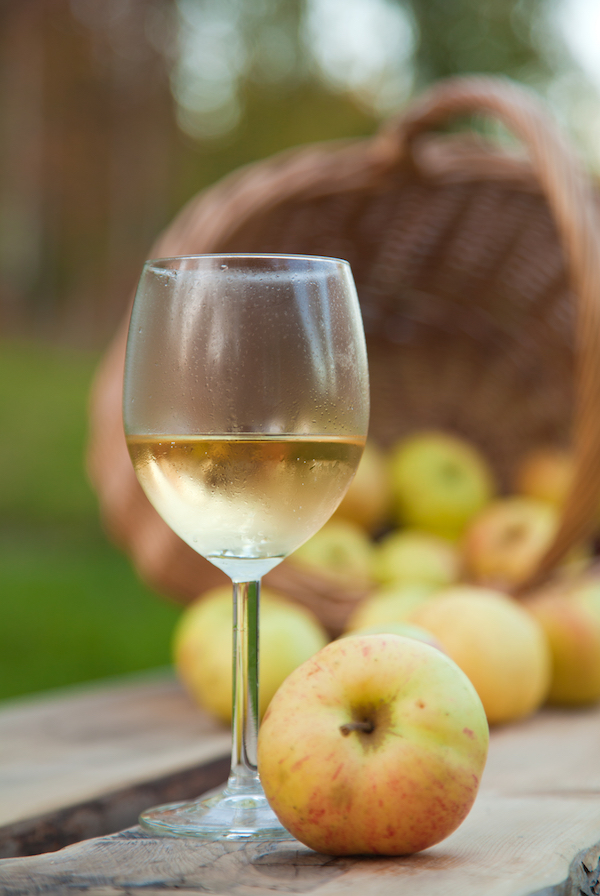
Dragon’s Blood Mead (or Viking Blod Mead)
Somewhat of a modern novelty, dragon’s blood mead is named for its deep red color (as black mead is named for its color from black currants). It’s also sometimes called “Viking Blood” or “Viking Blod” mead.
Recipes vary, but dragon’s blood mead is often made with cherries or a mix of berries like raspberry and blackberry. I’ve even seen a recipe for dragonfruit mead called “dragon’s blood,” so clearly there’s some room for interpretation here.
I think mostly the name comes from a desire to have really epic labels on your wine bottles, so use your imagination.
I also found a video recipe for Viking blood mead (cherry melomel).
Morat
While they were often grown and harvested historically, mulberries just aren’t all that common anymore. We’ve foraged wild mulberries, and while they’re delicious, it can be hard to harvest enough before the birds strip the trees.
Historically this prolific fruit was plentiful, which is why mead made with mulberries gets its own specific name.
There aren’t a lot of morat recipes available online, but I did find this lovely video recipe for morat:
Pyment
Back in the day, there was less of a distinction between different types of fermented beverages. Often they were throwing in anything fermentable, and most archeological sites have residues in vessels that contain a mix of grapes, honey, fruit, and grain malt. So it was part wine, part beer, and part mead.
A mixture of grapes and honey was quite common, as it had great flavor, and you could still make a fine drink even if your grapes weren’t quite sweet enough to ferment into wine on their own.
Generally, pyment recipes include only a small amount of grape juice, and then the balance of the liquid is made up with water. That keeps the pyment from tasting too much like straight wine, and also makes sure that most of the fermentable sugars are coming from honey.
- Pyment Recipe (video)
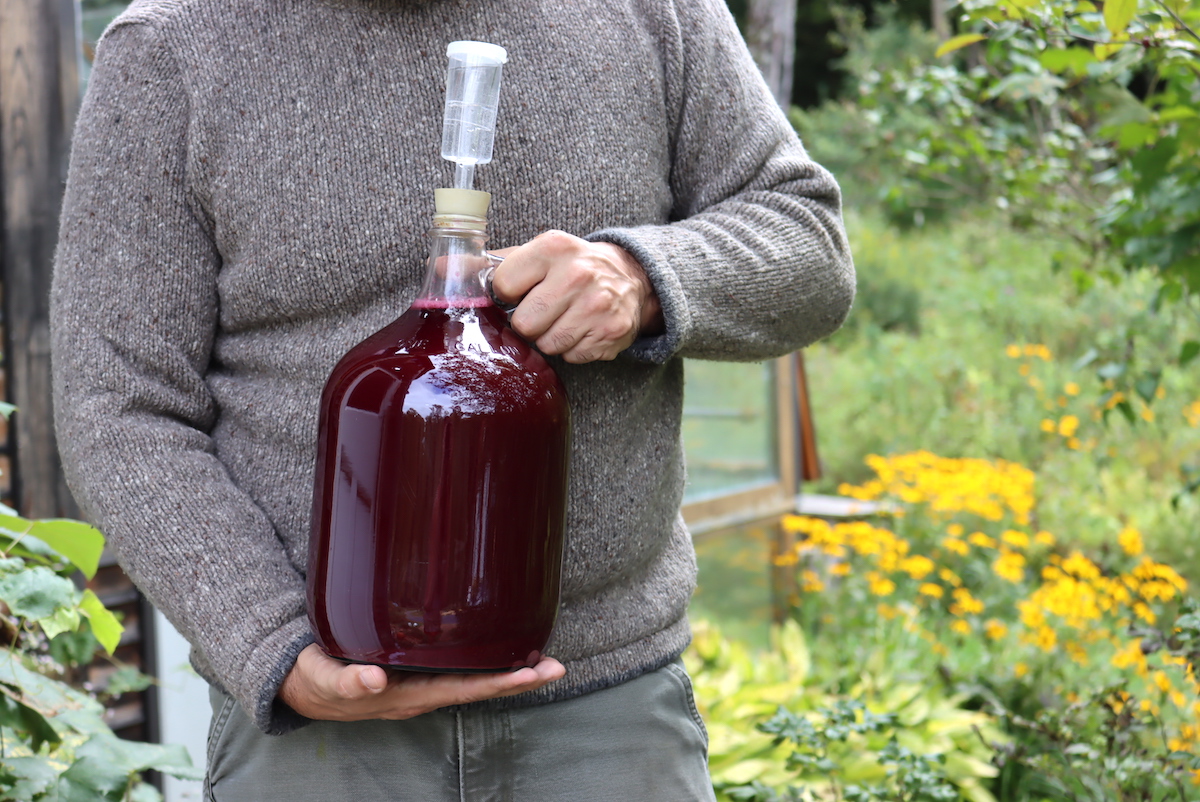
Other Fruit Meads
Beyond the specifically named fruit meads described above, you can actually make mead with just about any fruit. It can be tricky to get the right acid balance, and sometimes it’s hard to know how much honey to add to get your target alcohol level (while still having enough residual sugar).
I sometimes just use my own fruit wine recipes, like this peach wine recipe or blackberry wine recipe, and substitute honey in place of sugar. Made with honey they have more body and a more complex, refined taste.
These fruit mead recipes are tested and well-balanced and are a good place to start if you hope to branch out and develop your own recipe.
- Blackberry Mead
- Blueberry Mead
- Cranberry Mead
- Peach Mead with Rose and Elderflower
- Clementine Mead (Also works with tangerine or orange)
- Pomegranate Spiced Mead
- Plum Mead (or, Damson Plum Mead and Greengage Plum Mead)
- Strawberry Mead
- Strawberry Lemon Balm Mead
- Strawberry Elderflower Sparkling Mead
- Elderberry Mead
- Chokecherry Elderflower Mead (made with wild foraged chokecherries)
- Small Batch Raspberry Mead (small bath, one-quart recipe)
- Raspberry Wine (Can become mead by substituting honey for sugar)
- Rhubarb Mead (Small batch recipe)
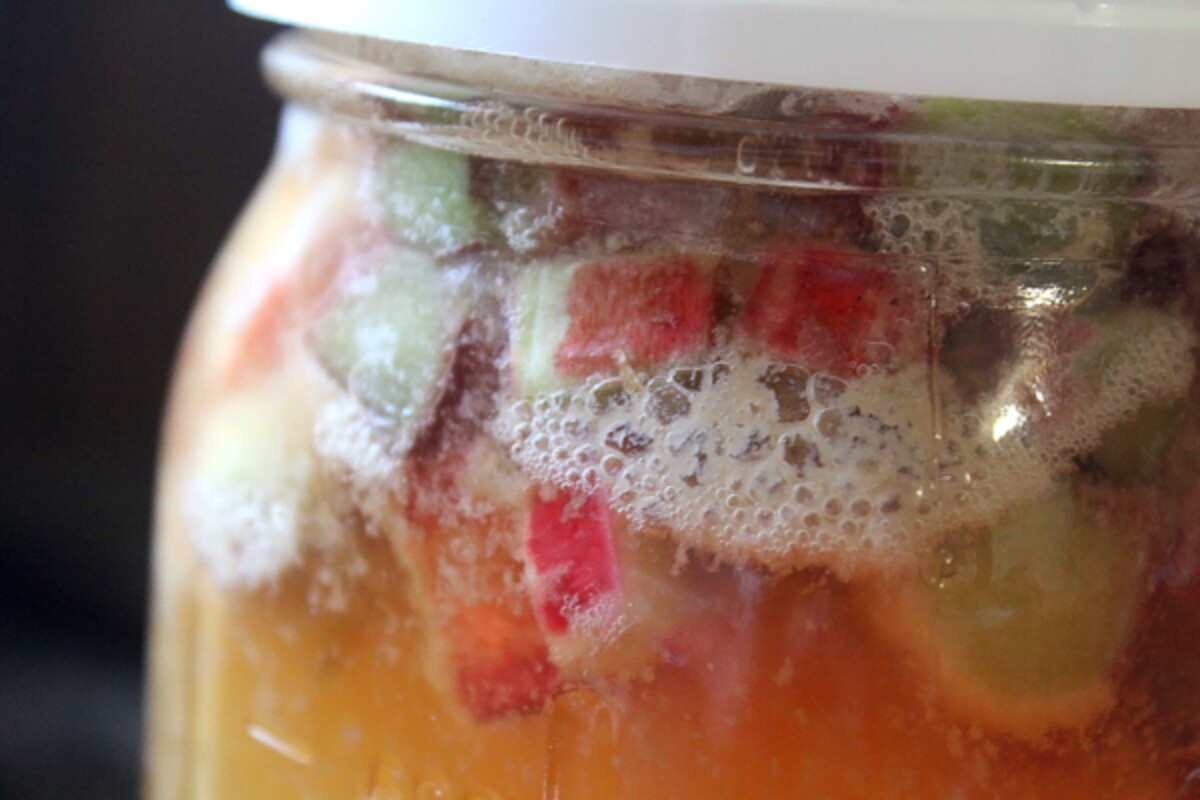
Metheglin Recipes (Floral, Herbal, and Spice Meads)
When made with herbs, spices, or flowers meads are referred to as Metheglin. Historically, these meads were often considered medicinal, and even common kitchen spices like cinnamon, cloves, and allspice were added specifically for medicinal value.
You can find literally dozens of recipes in the book Sacred Herbal Healing Beers: The Secrets of Ancient Fermentation.
I’d also recommend The Craft of Herbal Fermentation Course from the Herbal Academy, which not only teaches you how to make basic wine, beer and mead, it also covers how to incorporate herbs into your recipes for both flavor and medicinal value.
There are two specific types of mead within the “metheglin” heading that have their own names, a mead with chili peppers and another made with roses. Beyond that, all other herbal, spice, and floral meads are just generically called metheglin.
Capsicumel
The first time I encountered chili meads was at Pennsic, a two-week-long camping event for medieval reenactors in the Society for Creative Anachronism (SCA). It seemed like a weird novelty that somebody thought up in their basement, but it was unbelievably popular.
Not only did just about every brewer in every camp have their own version (which can’t be said about herbal meads or any other type but plain mead), but they were always incredibly popular with the drinkers who just couldn’t get enough of the sweet-spicy brew.
It turns out, adding a little heat to your mead actually works really well!
Rhodomel
Any mead made with roses or rose petals is referred to as a rhodomel, and these were popular with the ancient Romans.
- Rose Mead or Rhodomel Recipe
- Rose Hip Mead
- Spiced Hawthorn and Rose Hip Mead (Hawthorn is also in the rose family)

Other Herbal and Spiced Meads
Really most herbs and spices can be used to make mead, but it’s hard to add just the right amount. Some spices, like cinnamon and clove, can be bitter and overwhelming you use too much.
Other herbs, like chamomile, are so delicate that they’ll go unnoticed unless you use quite a bit.
These tested recipes for spiced and herbal meads are a good place to start for beginners.
- Dandelion Mead
- Lilac Flower Mead
- Wildflower Mead
- Vanilla Bean Chamomile Mead
- Elderflower Mead
- Mead with Hops
- Hop Head IPA Style Mead
- Ginger Mead
- St. Johns Wort and Cherry Herbal Mead
- Lemon Ginger Mead
- Lemon Balm Mead
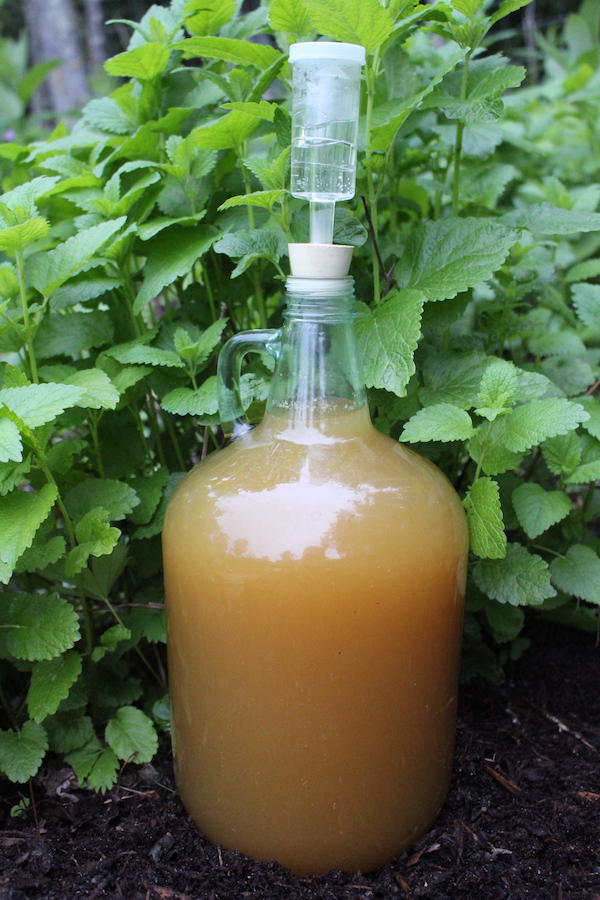
Lactomel (Milk Mead)
Lactomel is a rather specific “milk mead” that’s in some ways like a milk stout (beer). Lactose is a “non-fermentable” sugar meaning that it’ll add sweetness and body, but won’t ferment. It’ll still be present in the finished beer as lactose.
The result is a thick, sweet mouthfeel somewhat reminiscent of a milkshake (but not quite).
Bochet (Carmelized Mead)
Bouchet and braggot are two different types of meads that incorporate special fermentable sugars into the recipe.
In the case of Bochet, the honey is first caramelized over a hot fire (but not burned) which creates deep caramel flavor notes in the finished mead. Atlas Obscura wrote about how tricky it is to make, mostly because the honey is superheated and can overflow and cause serious burns.
Once the honey is caramelized, other flavors can be added too. Fruit flavors are reasonably common with bochet, because fruit and caramel go so well together (thing apples, peaches, or even bananas).
Braggot (Malted Mead)
Braggot is a bit different, and it’s made with a mixture of honey and malt. While pyment is the love child of wine and mead, this is a similar mixture of beer and mead. Hops are often added too, but historically, braggot would have been made with brewing herbs like yarrow or other similar herbs.
(We consider those to be “gruit” or herbal beer these days, or beer without hops, but back in the day hops were less common than other herbs in beer.)
- Basic Braggot Recipe
- Honey Saison Braggot
- Braggot Recipe (with all-grain and extract options)
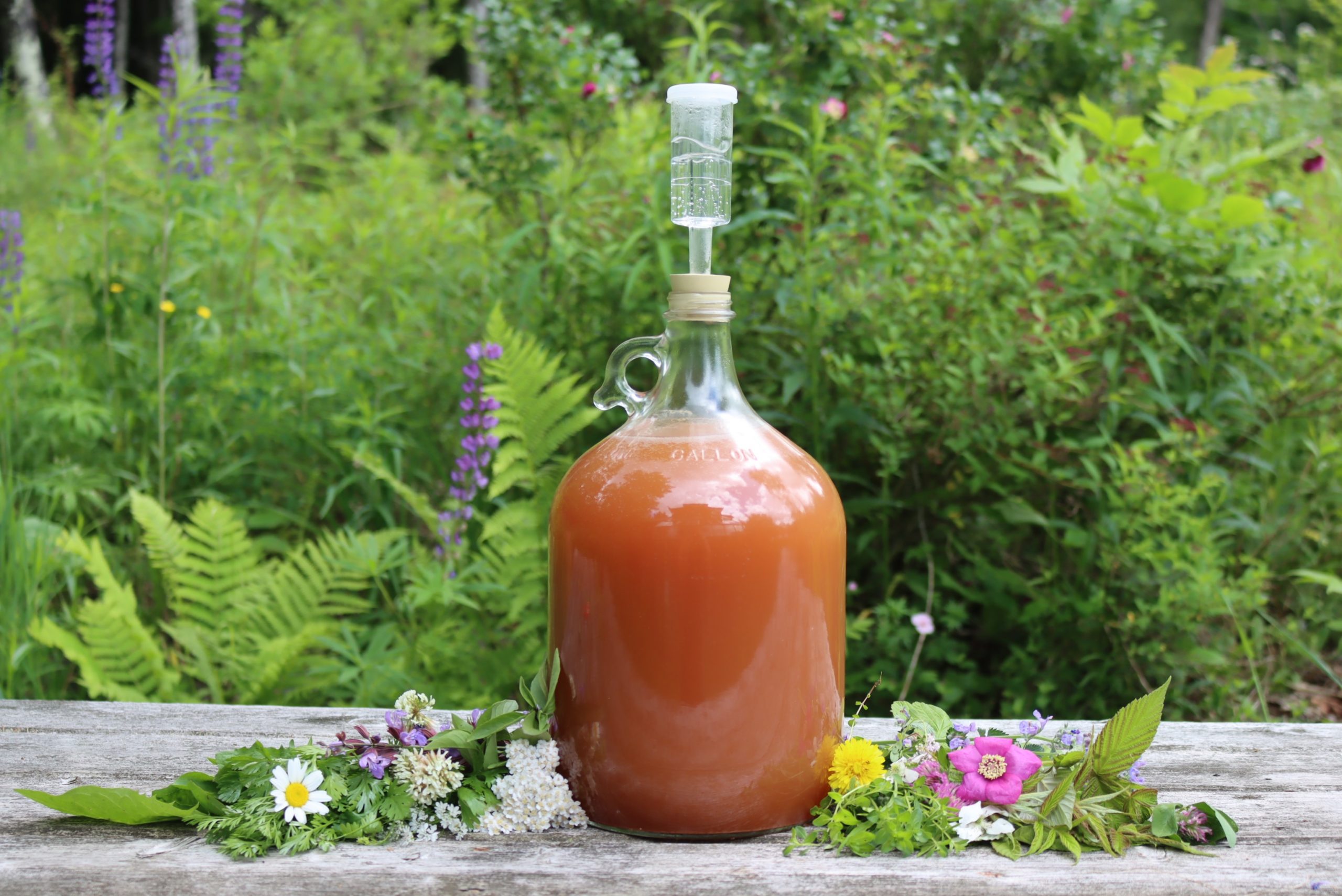
Tree-Based Meads (Sap, Syrup and Oaked Meads)
Sometimes made with just syrup, and it’s questionable as to whether or not that’s actually “mead” since it often doesn’t contain honey. Sometimes, tree sap or syrup is used for flavoring and the main fermentable sugar is honey.
We make maple syrup, and also tap birch trees for syrup, so we’ve made a number of sap-based meads. Either using the syrup as in this birch syrup beer, or just substituting the sap for water and then adding honey to make mead.
Adding toasted wood chips to a mead during secondary is also a great way to add flavor, and it’s reminiscent of the old oaked meads of history (without the expense of buying an oak cask).
- Spiced Acerglyn or Maple Mead (Made with just maple syrup, no honey)
- Birch Beer or Birch Mead (Made with birch sap and syrup, no honey)
- Oaked Mead
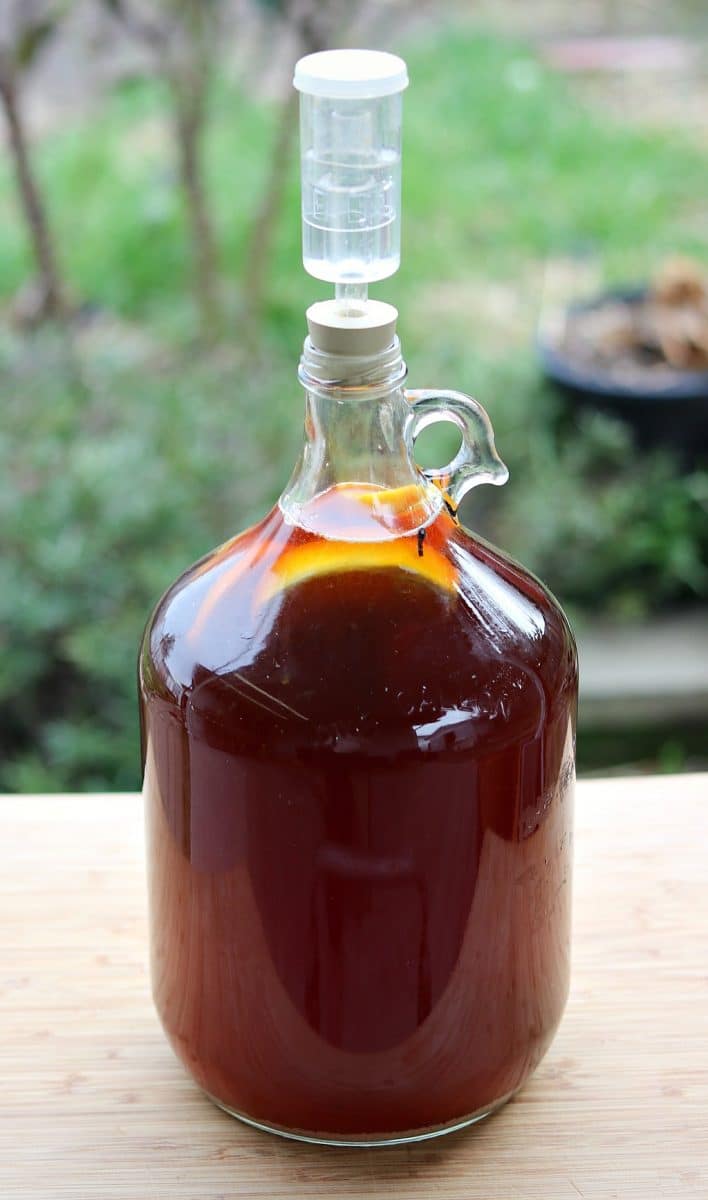
Fortified Meads
Any mead can be made into a fortified mead, and all you really need to do is “fortify” the brew at bottling with a spirit. It’s similar to port, which is a wine with brandy added.
You can add any spirit, and I’d suggest choosing one that compliments the other flavors in the mead. Though brandy is the most common, you can also use whisky, gin, or anything else.
Homemade Fermented Beverages
Once you have the equipment for making mead, you’re all set up for making a number of other tasty beverages (alcoholic or not).
- How to Make Hard Cider
- How to Make Pear Cider (Perry)
- How to Make Small Batch Wine
- How to Make Homemade Beer
- How to Make Water Kefir (non-alcoholic)
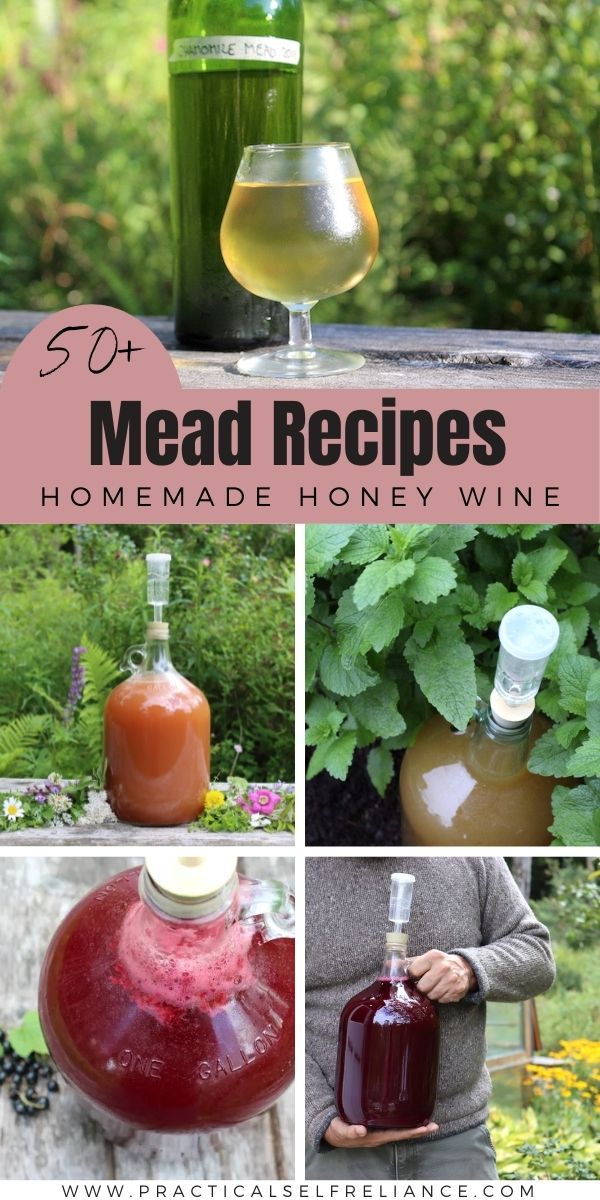



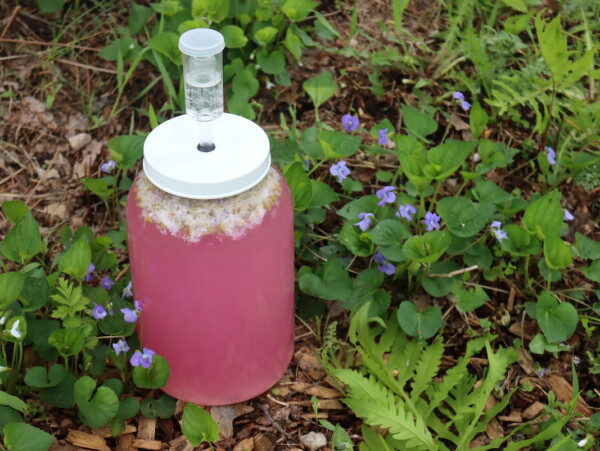










The fact that you made mead in a dorm room makes me excited to try these recipes by ourselves. I want to first try the Quick Black Mead recipe. I don’t think we can handle the alcohol content of regular fermented meads.
That’s great. Please let us know how it turns out for you.
Thank you so much for collecting all of these recipes in one place. I enjoy reading so much of what you’ve posted, and by the looks of things, I’ve just scratched the surface. I have 2 quarts of strawberry elderflower mead brewing now. I have 2 siblings that keep bees, so I’m gifted honey on occasion. I’m very excited to see how this mead turns out. Thank you again for sharing your wealth of knowledge! If I’m reading on my phone, it’s almost always something you’ve posted 🙂
You’re very welcome. We’re so glad you’re enjoying the blog. Thank you for sharing.
Lovely piece of information very helpful
Thank you, we’re glad you enjoyed it.
I just want to thank you for this information. I have a younger brother who is a bee keeper. I will forward this to him
and I will try to make some myself.
Wonderful! Merry mead making =)